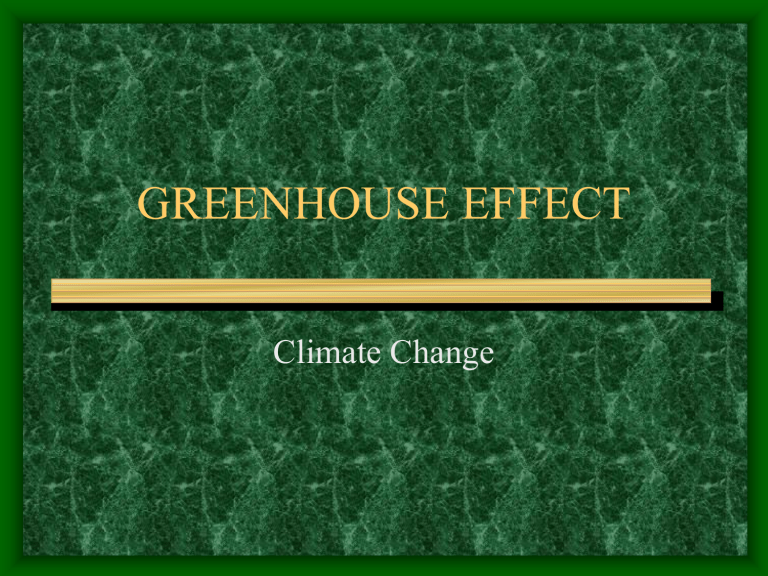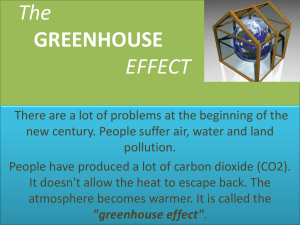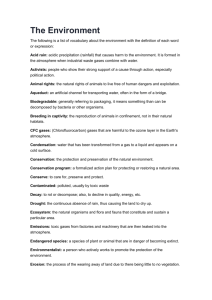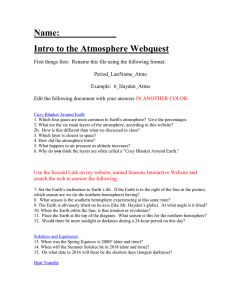GREENHOUSE EFFECT

GREENHOUSE EFFECT
Climate Change
Greenhouse Effect
• Is a natural process that permits the Earth to retain some of the heat from the sun.
• Gases in the atmosphere (water vapor, carbon dioxide, nitrous oxide, and methane) trap energy from the sun.
Without Gases
• Without these gases, heat would escape back into space and Earth’s average temperature would be about -18 ° C .
• Because of how they warm our world, these gases are referred to as greenhouse gases.
•
Energy from the Sun passes through the atmosphere.
•
Some Infrared rays are absorbed, then emitted back to the atmosphere.
•
The greenhouse gases capture these rays and return them to the earth.
•
A portion of the energy (26%) is reflected or scattered back to space.
•
About 19% of the energy available is absorbed by clouds, gases like ozone.
•
The remaining 55% of the energy passing through the Earth's atmosphere, 4% is reflected from the surface back to space.
•
On average, about 51% of the Sun's radiation reaches the surface.
•
This energy is then used in a number of processes, including the heating of the ground surface; the melting of ice and snow and the evaporation of water; and plant photosynthesis.
Human Activity
•
How are we changing the greenhouse effect?
•
Normally most of the CO
2 came from
Forest Fires, Volcanic Eruptions and
Cellular Respiration
•
Now the increase of fossil fuels and the clear cutting of Forests is shifting the balance of the CO
2 present in the atmosphere
Greenhouse Demo
Graph











